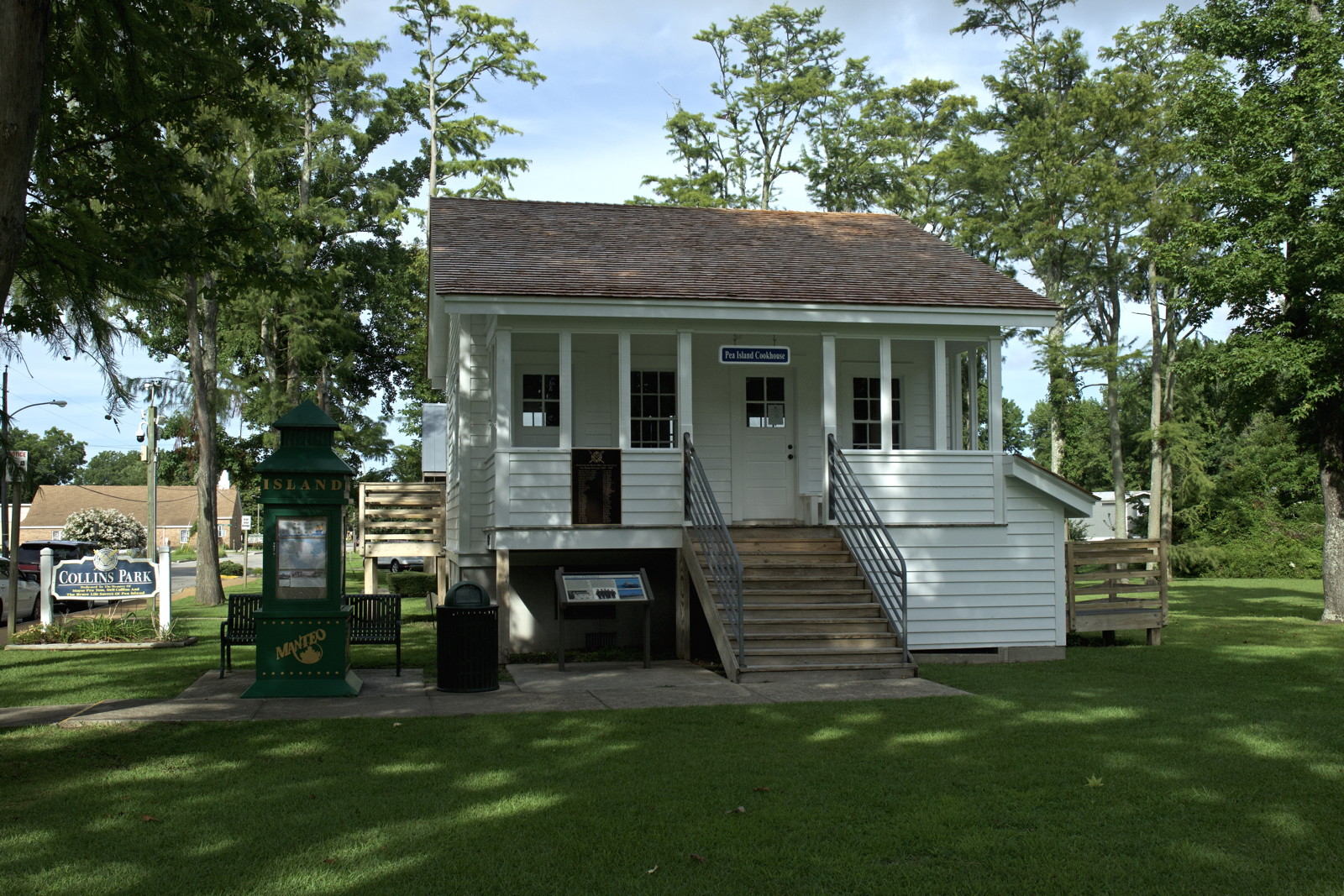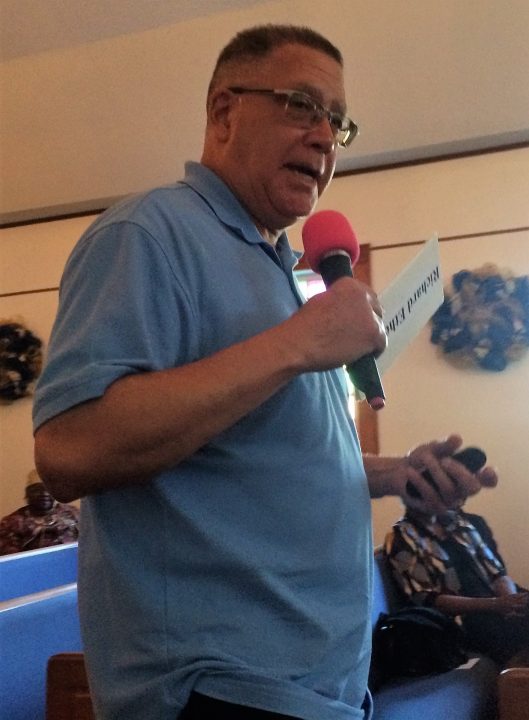
The Pea Island Cookhouse Museum in Manteo is a small building. Built sometime in the late 1930s, it was once the cookhouse for the Pea Island Coast Guard Station on Hatteras Island.
The significance of the building, though, is far greater than its size, for this meticulously restored structure is a direct link to Pea Island Life-Saving Station, the first to be commanded by an African American. Capt. Richard Etheridge was named keeper in 1880 and from then until 1947, when it was deactivated, Pea Island was manned by an all-Black crew.
Supporter Spotlight
The museum, across the highway from downtown Manteo, is not a part of the usual visitor traffic.
A visit to the museum often includes the chance to talk in depth about the history of the station with the volunteers, many of whom are Pea Island Preservation Society board members and direct descendants of those who manned the station. The Pea Island Preservation Society is a nonprofit organization with the purpose to preserve and interpret the history of The Pea Island Life-Saving Station.

Darrell Collins, president of the Pea Island Preservation Society Board, has a personal connection to the station and the Coast Guard. His father, Frank Collins, served 16 years in the service before dying during Hurricane Donna in 1960.
He was in a car with three other Coast Guardsmen when tragedy struck.
“They were on their way back to the station (from Manteo) during Hurricane Donna. And evidently, they thought they could make it back to the beach,” Collins said. But they were in the eye of the storm, and when the eye passed “a wall of water came in and washed the car they were in over. Three Coast Guardsmen died that day. Oscar Berry, the driver, was the only one that escaped by clinging to a telegraph pole.”
Supporter Spotlight
There are other connections as well. His uncle, Herbert Collins, was the last man in charge of Pea Island when it was deactivated in 1947. Herbert Collins made a career in the Coast Guard, retiring as a lieutenant in 1976.
For Darrell Collins, though, the history of the Pea Island Station is more than a family story.
With a 40-year career in the National Park Service as a historian and interpreter, his ability to explain what the Wright brothers accomplished in ways that everyone could understand took him around the world before he retired in 2017.
That same storytelling he applies to the story of the Pea Island Life-Saving Station and its significance.
“These men found something in life that most African Americans would never find. They found a purpose in life in being there. They found pride and honor in what they did,” he said, adding, “This was a government-run organization. They had equal pay, which was unusual, and equal equipment. I think they actually, in a very little way, they changed the face of race in America. They interacted with other white stations. They became respected by the other white stations.”
The story begins with the Life-Saving Service General Supervisor Sumner Kimball’s effort to make the service a professional organization and hearing about the
After several shipwrecks off the North Carolina coast in the late 1870s when life-saving station keepers and crews failed to save the victims due to either negligence or incompetence, the Outer Banks were at the center of the call to reform the Life-Saving Service.
The Pea Island Station Keeper George Daniels was dismissed after the schooner M&E Henderson sank within sight of the station in 1879 and inspectors learned the station had failed to patrol the beach.
Kimball and his team were aware of Etheridge’s competence.
First Lt. Charles F. Shoemaker’s evaluation of Surfman No. 6 Etheridge, the lowest rank at the station, at the Bodie Island Station, acknowledged that no Black man held the position of keeper, but went on to say, “I am fully convinced that the interests of the LifeSaving Service he, in pain to efficiency, will be greatly advanced by the appointment of this man to the Keepership of Station No. 17.”
Etheridge was promoted to Pea Island Station keeper and the white crew immediately quit — allowing for the installation of an all African American crew.
Etheridge may have been the perfect person for the job. Born enslaved in 1842 on Roanoke Island, he listed in the Union Army as soon as the island was liberated by northern forces in 1862. He fought in the Battle of New Market, one of the most horrific battles of the war, rising to the rank of commissary sergeant, the highest rank permitted a Black soldier at that time, before mustering out in 1866 and returning to Roanoke Island.
“He was put in this position because they realized that he would go the extra mile to make sure that everything was run correctly by the book,” Collins said. “He was a real taskmaster is my understanding, He might not have been somebody you’d want to work for. He knew the stakes that were involved. That they could take the station away from him.”
That drilling paid huge dividends in a hurricane when the schooner ES Newman was driven aground Oct. 11, 1896, 3 miles south of the station. Unable to use their equipment because of wind, surf and overwash on the beach, members of the crew took turns swimming through the pounding waves to the Newman with a lifeline attached. All nine crew members on the ship were saved.
It took 100 years for bravery of the men that night to be fully recognized, but in 1996 the descendants of the Pea Island Crew were awarded the Coast Guard Gold Lifesaving Medal, the highest medal for bravery the service awards.
Although the Newman rescue is what the Pea Island Station is most noted for, to Collins, it is one part of a much larger picture, a mission that is more than simply retelling the story of Richard Etheridge and the all-Black crews that followed.
The museum has an outreach program focusing much of its attention on children under the direction Joan Collins, Darrell’s cousin. The Cookhouse Museum initiated an outreach program a few years ago.
“We created Freedmens for Heroes as an education initiative, recognizing that we’re not going to get much traction in making people understand history by just opening the Cookhouse when we can,” she said. “We came up with an initiative designed to reach out and teach.”
A regular part of the visitor experience at the North Carolina Aquarium on Roanoke Island, the program is a live presentation of the significance of the Pea Island Life-Saving Station and its importance in history.
The program has been further expanded, Joan Collins explained. “We’re in all Dare County elementary schools. We’ve been doing that for the past three or four years. We do a live program with kids.”
The program is presented to fourth graders, and tells the true story Darrell Collins said. “We don’t pull any punches when they tell their story. We talk about racism. We talk about the difference between Blacks and whites in that particular era in history. And the kids are really into to this.”
The culmination of the program is an essay contest among all Dare County fourth graders.
This past year, two Latino children won first and second prize, Darrell Collins said.
“It’s a shared history, a shared history that still exists today,” Joan Collins added.







